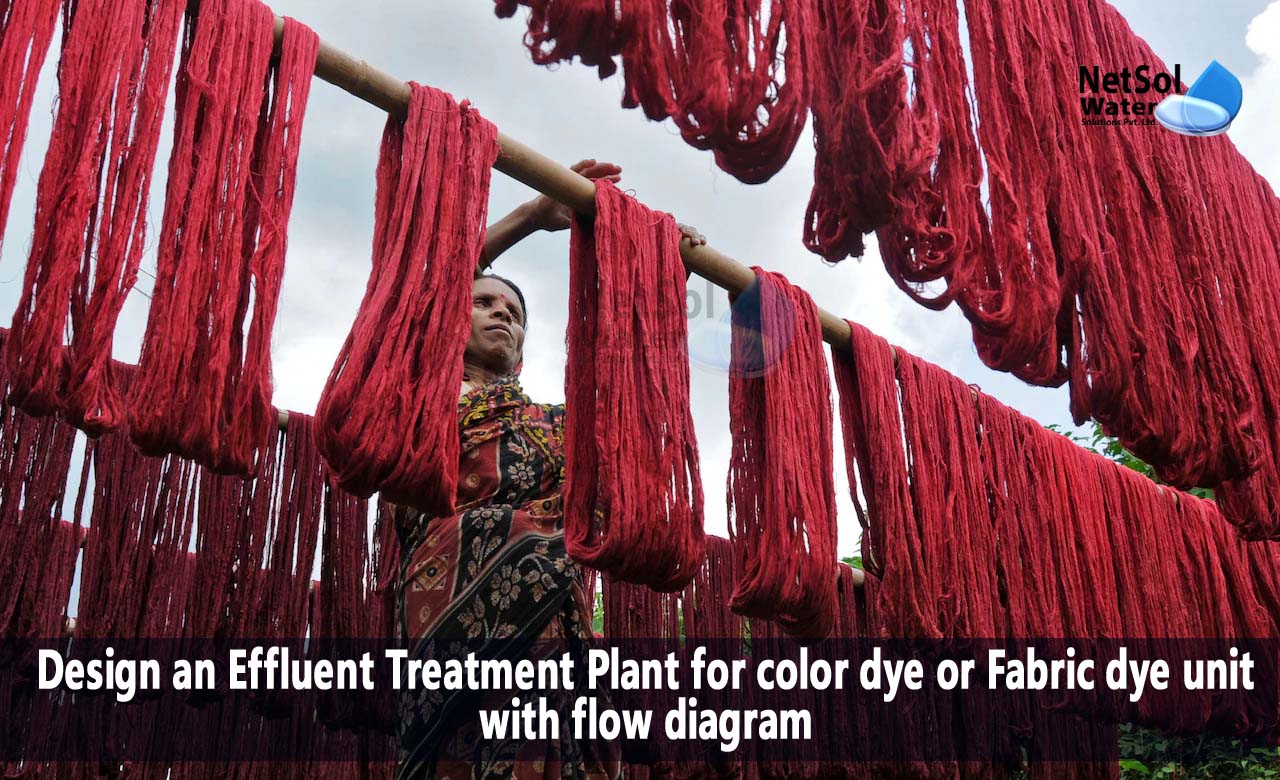The demand for a wide range of textile materials and colors has encouraged the use of numerous chemicals and dyes. Most of the dyes are kept in the finished textile material, but a significant amount of chemicals and leftover pigments are released into the effluents. In the detergent or soap industry, dyeing auxiliaries (surfactants), dye, dye carriers, and bacterial finishes are all examples of products that may contain harmful compounds.
To effectively remove all contaminants, it is generally required to combine multiple treatment methods. Each facility will need to determine the most cost-effective treatment for the effluent due to the broad variety of dyes currently in use.
Design an Effluent Treatment Plant for color dye or Fabric dye unit:
The physical, chemical, and biological processes involve those that are frequently combined in ETP. The four stages of treatment that an effluent treatment plant typically goes through are briefly detailed here.
1. Preliminary Treatment:
Preliminary treatment, often known as pretreatment, is the process of physically treating wastewater. Screening is involved, and bar screens are used to remove big solids like pieces of rags, fabric, yarn, lint, twigs, etc. that could harm the plant's machinery. The following step, known as physical treatment, is then applied to the waste water.
2. Primary Treatment:
This involves both chemical and physical processes to treat wastewater. When sewage reaches the primary tank, it remains there for a considerable amount of time, causing heavier particles to sink to the bottom and lighter ones to float to the top. By using the flocculation and coagulation processes, settled and floatable materials are removed in this treatment before being sent to a secondary or biological treatment.
3. Secondary Treatment:
The secondary tank receives wastewater that is free of physical impurities and uses biological mechanisms. The majority of ETPs employ biological treatment, which includes aerated lagoons, the activated sludge process, trickling filters, and oxidation ponds, for the removal of BOD, however the activated sludge process is the most adaptable. At this point, around 80% of the organic waste will be eliminated before tertiary treatment.
4. Tertiary Treatment:
This stage uses physical, chemical, and biological methods to eliminate any remaining suspended materials, dissolved solids, etc. that were not eliminated during the previous treatment stages. Several disinfection agents, such as chlorine, ozone, and UV radiation, are most frequently utilised depending on the wastewater quality. After this treatment, wastewater is finally suitable for disposal or other uses.

Process flow diagram of ETP for fabric dye unit
Design calculations:
1. For neutralization tank:
Consider Input flow rate to tank Q = 564 m3 per day.
Taking depth of the tank, H = 2.5m and Detention time, t = 3hr
Therefore, Tank volume needed: V = Q*t = 564m3 per day*3 hours*(1/24) d/h = 70.5 m3
The cross-sectional area of the tank, A = Volume of tank/ Depth of tank = V/ H =70.5m3 /2.5m = 28.2m2
2. For coagulation tank:
Considering the total volume of wastewater to be treated per day = 564m3 .
Assume a 25-minute retention period in the basin
As a result, the tank's capacity is equal to the amount of wastewater that must be treated in 25 minutes, which is 564 m3 in 24 hours (1 hour and 60 minutes).
3. For settling tank:
Assume Influent flow rate to the tank=570.86m3 /day
Detention time: 2 hours, hight: 2 m
The tank's volume is (V) = Q*t = 570.86m3 per day*2/24day = 47.57m3.
Area of the tank is =volume of the tank/ high =V/H =47.57m3 /2m =23.78m2
Do you need an advice or assistance on selecting the best water and waste water treatment unit? We have solutions for all your problems!
Let us now your problem, our experts will make sure that it goes away.
For an assistance or related query,
Call on +91-965-060-8473
Or write us at enquiry@netsolwater.com



